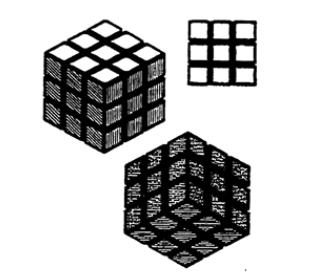


EGC: Rubik’s Cube trademark registration upheld
December 03, 2014
Categories:
Beitragsdatum:
3. Dezember 2014 - 15:42
The European General Court (EGC) ruled that the three dimensional shape of the Rubik‘s Cube as a Community trademark is valid (Judgment dated 25 November 2014; Case No.: T‑450/09).
Background of the Case and Subject Matter
In 1974, a young Professor of Architecture in Budapest (Hungary) named Erno Rubik created the multi-colored “three-dimensional puzzles” you can see below. The so called “Rubik's Cube” can be twisted and turned around without falling apart. The aim is to make each side of the cube a single color.
Seven Towns, a UK company which manages the intellectual property rights relating to the “Rubik’s Cube”, registered the shape of the cube as a three-dimensional Community Trademark (No: 162784), in April 1999.
In 2006, Simba Toys, a German toy manufacturer, applied at the Office for Harmonization in the Internal Market (OHIM) to have the three-dimensional trademark cancelled. Simba Toys is of the opinion that the cube involves a technical solution consisting of its rotating capability and such a solution may only be protected as a patent and not as a trademark. OHIM dismissed Simba Toy’s cancellation request. Therefore, Simba Toys brought a final action before the EGC against the decision of OHIM.
Decision of the Court
The EGC recognized that the famous Rubik’s Cube is a valid three-dimensional trademark.
First, the Court pointed out that the essential characteristics of the contested trademark are the “cubic grid structure”, namely the cube per se and the grid structure which appears on each of its surfaces. According to the Court, the rotating capability of the vertical and horizontal lattices of the Rubik’s Cube does not result from the black lines or the grid structure. Its capability is the result of an internal mechanism which is invisible on its graphic representations. Therefore, the registration of the shape of the Rubik’s Cube as a Community Trademark cannot be rejected because the shape does not include any technical function.
The Court determined that the trademark does not allow its holder to prohibit others from selling different types of three-dimensional puzzles that have a rotating capability. Instead, of the marketing monopoly is limited to three-dimensional puzzles that have the shape of a cube with surfaces which bear a grid structure (as seen above).
Finally, the Court came to the result that the cubic grid structure of the trademark differs from the structure of other three-dimensional puzzles on the market. Therefore, the structure has a distinctive character which enables consumers to see the structure as an indication of the origin of the product.
Related
- "Neuschwanstein" is not a trademark!
- 14 June 2013: Munich Patent Law Conference - Calculating Damages in Patent Infringement Cases
- 15 Top Brands - Interactive Brand Rating - Years 2000 - 2018
- 2014: Statistics for Community Trademarks
- 27 June 2014: Munich Patent Law Conference – Burden of Pleading and Proof in Patent Infringement Cases
- 3D-Trademark Protection for layout of Apple Stores
- 40th Anniversary of the European Patent Convention (EPC)
- A backpack shape as a 3D trademark – a BoA decision of the EUIPO
- A case of „Bounty“ hunting in Germany
- A new report on the economic impact of counterfeit trade published by OECD and EUIPO
